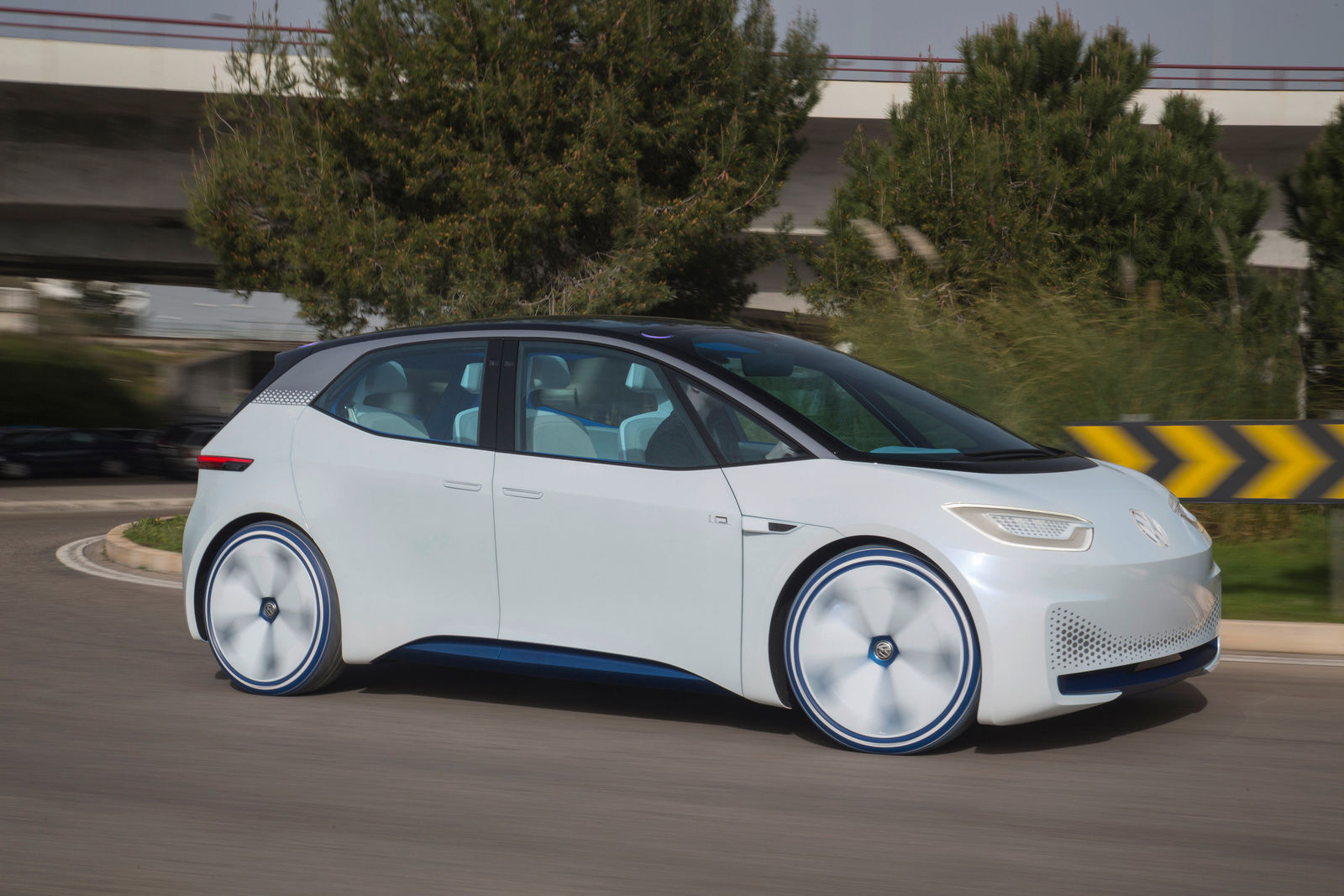MEB changes everything. The I.D. is the first compact Volkswagen based on the newly developed Modular Electric Drive Kit – or MEB. The future MEB models will be cars that are only available with purely electric drive. This approach to the design results in a range of advantages, in particular with regard to the package – the layout of the powertrain components, the ancillary equipment and the interior features. The I.D.'s zero-emission drive system consists primarily of the electric motor and the power electronics and transmission integrated in the rear axle, a space-saving high-voltage flat battery in the floor of the car and ancillary equipment integrated in the front of the car.
A range of 400 to 600 kilometres. The electric engine has a power output of 125 kW (170 PS). The almost silent performance is truly amazing. The I.D. can accelerate from 0 to 100 km/h in under 8 seconds from a standing start and has a top speed of 160 km/h. Subsequent production versions could also be offered with more or less powerful electric motors. In parallel, the concept also envisages that it will be possible to configure the I.D. with different battery capacities. As is the normal for petrol and diesel-engined cars, this would allow the drive system to be modified to suit the owner's individual needs. The I.D. will have a range of between 400 and 600 kilometres.
A centre of gravity like a racing car. The version of the high-voltage battery used in the I.D. is located in the chassis. As a crucial link, the power electronics control the flow of high-voltage power between the motor and the battery. The power electronics module converts the direct current (DC) stored in the battery into alternating current (AC) and a DC/DC converter supplies the on-board electronics with 12 V power. Power is transferred from the motor to the rear axle via a single-gear transmission. The motor, power electronics and transmission form one compact unit. The position of the battery in the floor of the vehicle has a positive effect on the neutral handling characteristics, as it gives the I.D. a very low centre of gravity, like that of a racing car. The I.D. is also characterised by an optimal weight distribution of 48:52 per cent.
Plenty of range in just a few minutes. The battery can be charged by cable or using an inductive charging interface in the front of the car. To charge by cable, a separate charging plug is needed to connect the car to an electrical outlet, but for inductive charging all the driver needs to do is park the I.D. over a so-called charging plate, with a little help from the electronics to make sure it is in exactly the right position. Over and above that it will be possible to send the car to an inductive charging station, too. Thanks to the rapid charging system the battery is already 80% charged after just 30 minutes.
